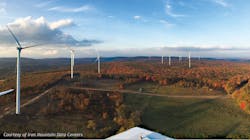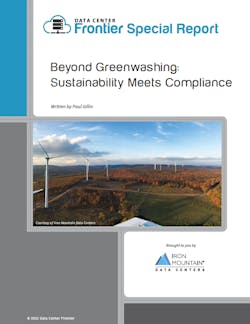How to Measure Data Center Sustainability
This launches our article series on metrics and mechanisms that data center operators can use track progress towards their environmental, social, and corporate governance goals.
Gartner expects spending on data center systems to rise more than 11% in 2022, making it the fastest- growing segment of all IT infrastructure. Dell'Oro Group forecasts data center physical infrastructure spending to continue to grow at an 8% compound annual growth rate through 2026 to over $31 billion.
Much of this expansion is expected to be driven by cloud and co-location service providers, many of which have made sustainability a top priority. Growing demand for smaller edge data centers, which are typically located closer to population areas, is further driving the construction of facilities that harmonize with local communities.
With sustainability fast becoming a priority for the entire industry, operators must establish material, impactful and measurable ways to assess progress and communicate results to stakeholders. There are many standards and certifications to choose from. While choosing the right ones for an organization can be complex, those decisions guide operators toward practices that drive continuous improvement and demonstrate a commitment to constituents.
Company-set goals are typically guided by standards like the International Organization for Standardization (ISO) 14001 and ISO 50001, as well as a host of metrics that measure factors like power, energy efficiency, water consumption, greenhouse gas emissions, materials recycling, and carbon credits.
Hyperscalers lead the way
The major cloud vendors have set ambitious sustainability goals that other operators can emulate.
- Facebook has committed to reaching net zero emissions across its value chain in 2030.
- Google plans to achieve zero-waste-to-landfill for its global data center operations in the same timeframe.
- Microsoft has pledged to be carbon negative by 2030 and by 2050 to remove from the environment all the carbon the company has emitted directly or by electrical consumption since 1975.
These ambitious goals may not be practical for the average data center and shouldn’t be used to define the standard for sustainability. Rather, every data center operator should develop a realistic program that is relevant to its business, set its own goals, and measure progress. Measurement is the cornerstone of the effort.
This article series proposes a set of metrics and mechanisms that any data center can use to evaluate and report on its progress toward sustainability goals. It also aims to demystify the major International Organization for Standardization (ISO) sustainability standards such as ISO 50001, ISO 9001, ISO 30134, ISO 14064, and ISO 14001.
Data center operators can use these frameworks and management system standards to establish a baseline of metrics that track their progress toward their companies’ environmental, social, and corporate governance goals, as well as to demonstrate compliance with various regulations set forth by federal governments. Compliance also has business benefits as it may enable operators to opt out of some government-imposed energy requirements.
Use these standards to create a framework for sustainability improvement as well as relevant metrics for each. They can be applied to evaluating your performance as well as those of your supply chain partners.
Download the entire special report, "Beyond Greenwashing: Sustainability Meets Compliance," courtesy of Iron Mountain Data Centers, to learn more. In our next article, we'll explore the five basic impact areas of sustainability goals.






